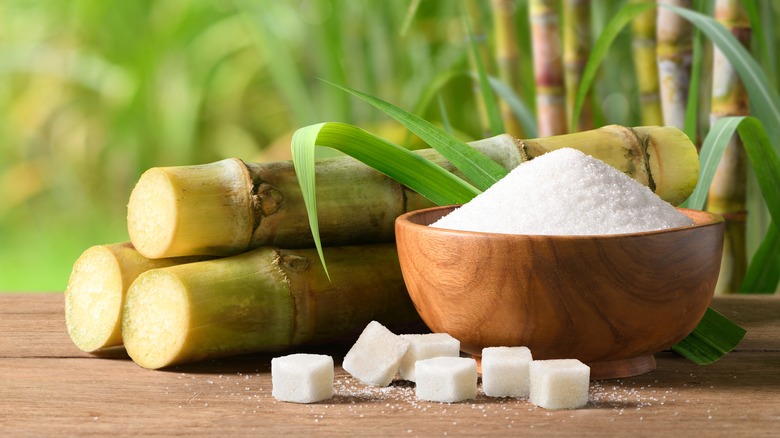Discover the Uses and Perks of Beet Sugar Vs Cane Sugar in Your Daily Diet Plan
Discovering the distinct high qualities of beet and cane sugar discloses greater than simply their sweetening abilities; it highlights their unique influence on health and cookeries. Beet sugar, recognized for its subtle flavor, is typically preferred in delicate desserts, whereas cane sugar, with its hint of molasses, adds richness to robust dishes. Each type holds its own dietary profile and glycemic ramifications, welcoming a deeper understanding of their duties in a well balanced diet plan and sustainable consumption methods.
Origin and Manufacturing Procedures of Beet and Cane Sugar

The distinct environments and soil kinds required for expanding sugar beetroots and sugarcane add to differences in their farming methods and geographical distribution, influencing the economics and sustainability of their manufacturing. beet sugar vs cane sugar.
Nutritional Comparison Between Beet Sugar and Cane Sugar
Despite originating from different plants, beet sugar and cane sugar are nutritionally extremely similar, both largely including sucrose. Each offers concerning 4 calories per gram, converting to roughly 16 calories per teaspoon. Structurally, both sugars are made up of about 99.95% sucrose, with marginal amounts of other compounds like moisture and trace minerals, which do not dramatically change their nutritional accounts.

Inevitably, when choosing in between beet sugar and cane sugar based on dietary material alone, both deal identical advantages and disadvantages as they are basically forms of the exact same molecule-- sucrose, giving fast power without other nutrients.
Effect On Health: Glycemic Index and Caloric Content
Checking out even more right into the impacts of beet sugar and cane sugar on health, it is essential to consider their glycemic index and caloric content. The discover this glycemic index (GI) of both beet and cane sugar is around 65, classifying them as high-GI foods, which can trigger fast spikes in blood sugar levels.
Each sort of sugar consists of around 4 calories per gram, making their calorie web content equivalent. For those keeping an eye on calorie consumption, especially when managing weight or metabolic health and wellness conditions, recognizing this equivalence is important (beet sugar vs cane sugar). Too much intake of any kind of high-calorie, high-GI food can contribute to wellness concerns such as obesity, heart disease, and insulin resistance.
Environmental and Economic Considerations of Sugar Production
Beyond wellness impacts, the production of beet and cane sugar additionally increases substantial ecological and financial worries. Sugar beet farming tends to require cooler climates and has a lower geographical impact compared to sugar cane, which thrives in tropical areas. However, both crops are extensive in terms of water use and land line of work, potentially resulting in deforestation and water shortage. Financially, the global sugar market is very volatile, influenced by adjustments in international trade policies and aids. Many countries incentivize sugar manufacturing through economic support, skewing market value and affecting small farmers negatively.
Furthermore, the usage of pesticides and plant foods in both beet and cane sugar growing can bring about dirt degradation and air pollution, further affecting biodiversity and neighborhood water bodies (beet sugar vs cane sugar). The selection in between cultivating sugar beet or cane commonly rests on local ecological conditions and financial aspects, making the sustainability of sugar manufacturing a complex issue
Culinary Applications and Taste Distinctions
While the environmental and economic aspects of sugar manufacturing are certainly substantial, the selection between beet and cane sugar also affects cooking applications and flavor profiles. Beet sugar, originated from the sugar beet plant, is understood for its incredibly neutral preference. This makes it a flexible active ingredient in baking, where it does not change the taste of various other elements. It dissolves swiftly and is ideal for usage in cakes, cookies, and pastries.
Walking click here to read stick sugar, drawn out from sugarcane, usually retains molasses traces, which pass on a distinct splendor and deepness. This small molasses flavor enhances the complexity of baked products, sauces, and marinades. It is especially preferred in things where a sugar undertone is desired, such as in brownies or gingerbread. Additionally, the minor variant in moisture content between beet and cane sugar can influence the appearance and consistency of dishes, making cane sugar a recommended option for specific dishes that take advantage of its one-of-a-kind buildings.

Final Thought
Finally, both beet and cane sugar have unique beginnings and production procedures, supplying comparable nutritional profiles with slight distinctions in sodium content and flavor. While their effect on health and wellness, specifically relating to glycemic index and calories, is comparable, the selection between them typically boils down to environmental, economic click for info factors, and specific cooking demands. Comprehending these aspects can lead customers in making informed choices that line up with their health and wellness goals and flavor choices.